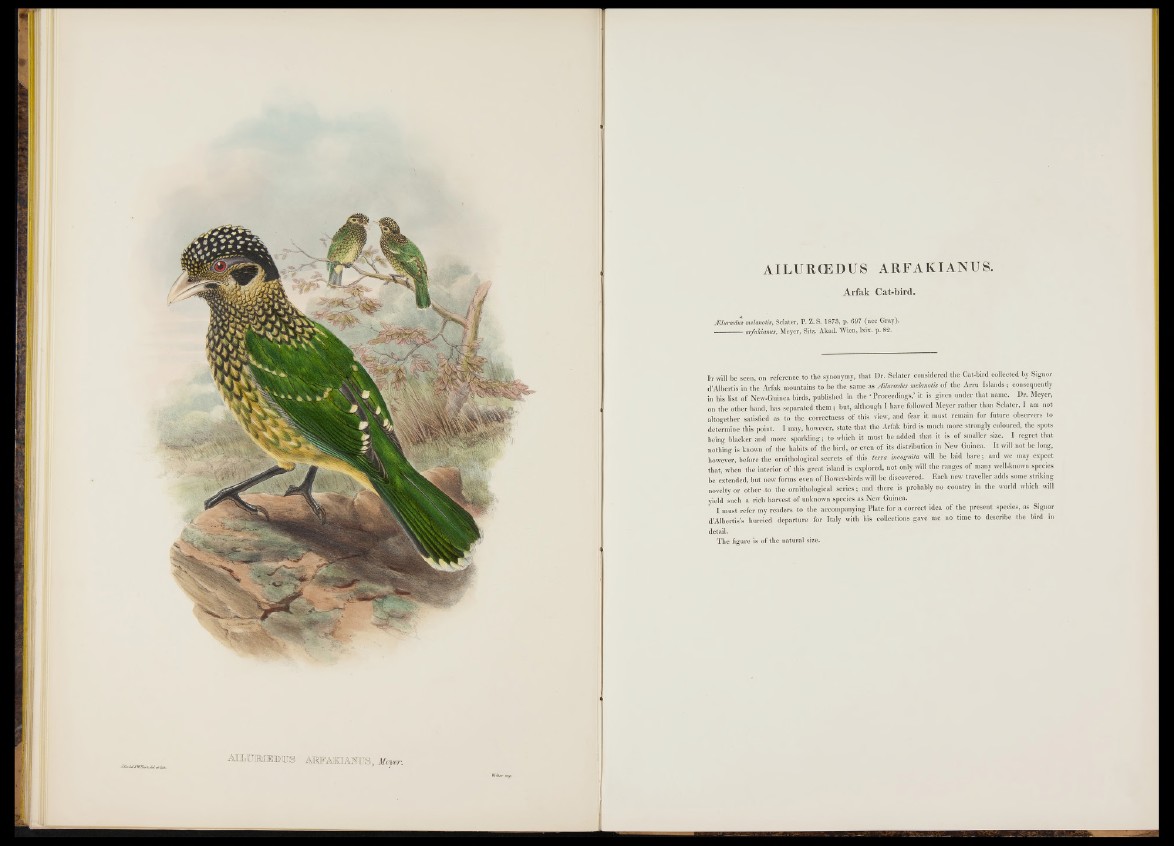
J*GottUl£WMart',ätl.f&lWv. ÄBLURflEDirS AMI'AKHANIUS, M eyer.
AILURCEDUS ARFAKIANUS.
.Arfak Cat-bird.
/Elwcechts melmotis, Sclater, P. Z. S. 1873, p. 697 (nee Gray).
--------------ar/aJcianus, Meyer, Sitz. Akad. Wien, Ixix. p. 82.
It will be seen, on reference to the synonymy, that Dr. Sclater considered the Cat-bird collected by Signor
d’Albertis in the Arfak mountains to be the same as Ailuriedus melanotic of the Arm Islands; consequently
in his list o f New-Guinea birds, published in the ■ Proceedings,’ it is given under that name. Dr. Meyer,
on the other hand, has separated them; but, although I have followed Meyer rather than Sclater, I am not
altogether satisfied as to the correctness o f this view, and fear it must remain for future observers to
determine this point. I may, however, state that the Arfak bird is much more strongly coloured, the spots
being blacker and more sparkling; to which it must be added that it is o f smaller size. I regret that
nothing is known of the habits o f the bird, or even o f its distribution in New Guinea. It will not be long,
however, before the ornithological secrets o f this terra incognita will be laid bare; and we may expect
that, when the interior o f this great island is explored, not only will the rauges o f many well-known species
be extended, but new forms even o f Bower-birds will be discovered. Each new traveller adds some striking
novelty or other .to the ornithological series; and there is probably no country in the world which will
yield such a rich harvest o f unknown species as New Guinea.
I must refer my readers to the accompanying Plate for a correct idea o f the present species, as Signor
d’Albertis’s hurried departure for Italy with his collections gave me' no time to describe the bird in
detail.
The figure is o f the natural size.